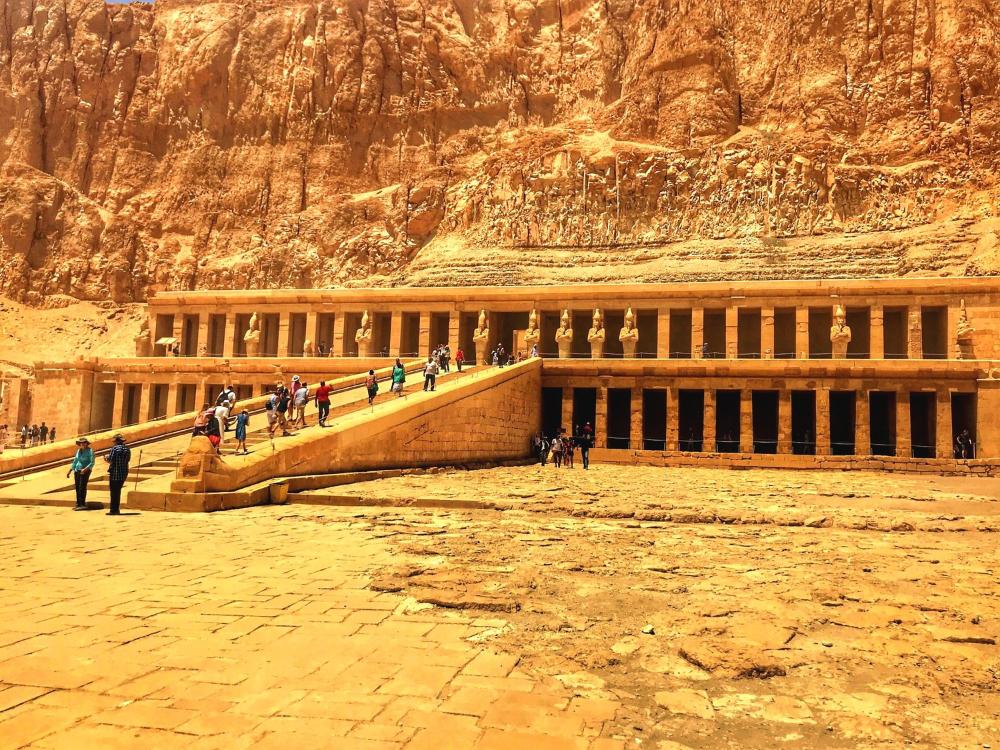
- Mortuary temple of Hatshepsut
- 1473-1450BCE
- Woman reigning, declared herself pharaoh longest female reign. Married to brother, their son was declared ruler but she made herself ruler instead
- Hypogeum (style of tomb), rock cut stone.
- Visual element: vertical lines point up towards the heavens, horizontal lines symbolizing stability. place for pharaoh to worship while alive, and people to worship pharaoh after their death (they become like gods)
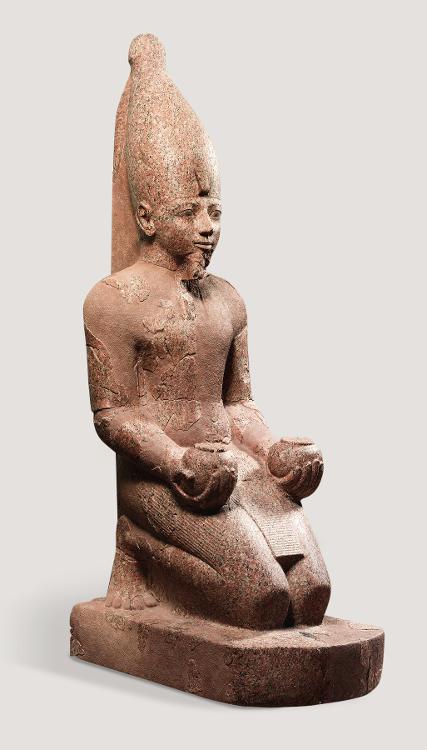
- Kneeling Statue of Hatshepsut
- 1479-1458BCE
- Gypsum
- more masculine presenting, kneeling to the gods
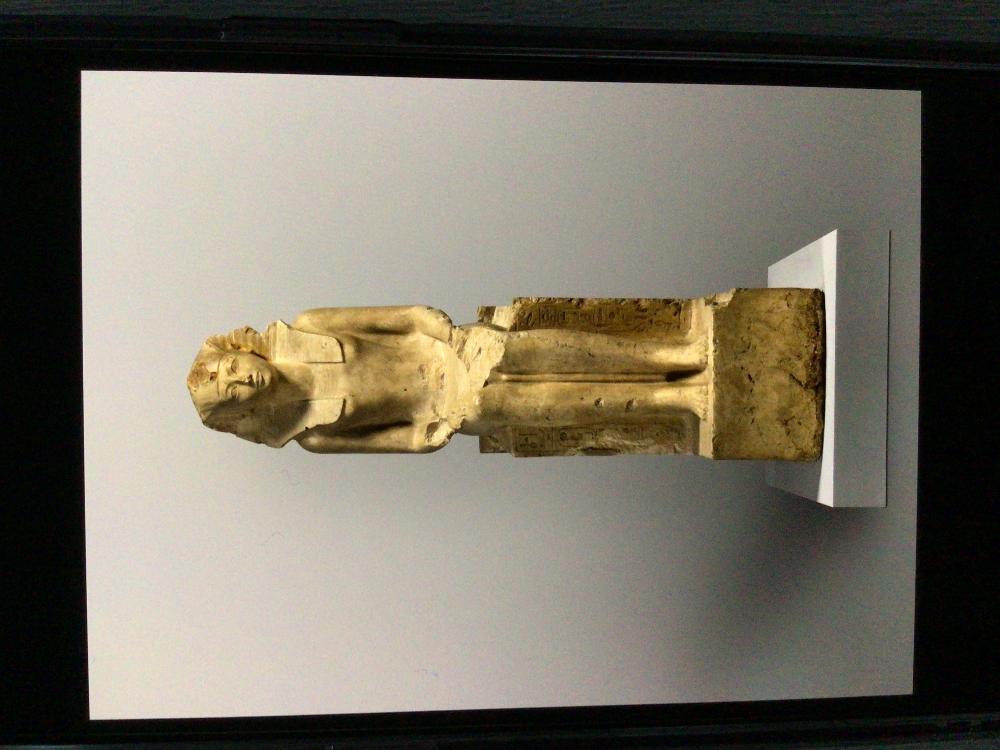
- Seated statue of Hatshepsut
- 1479-1458BCE
- limestone
- Njeims headdress for pharaohs only.
- Hatshepsut was not buried in tomb bc of potential raiders, she was mummified
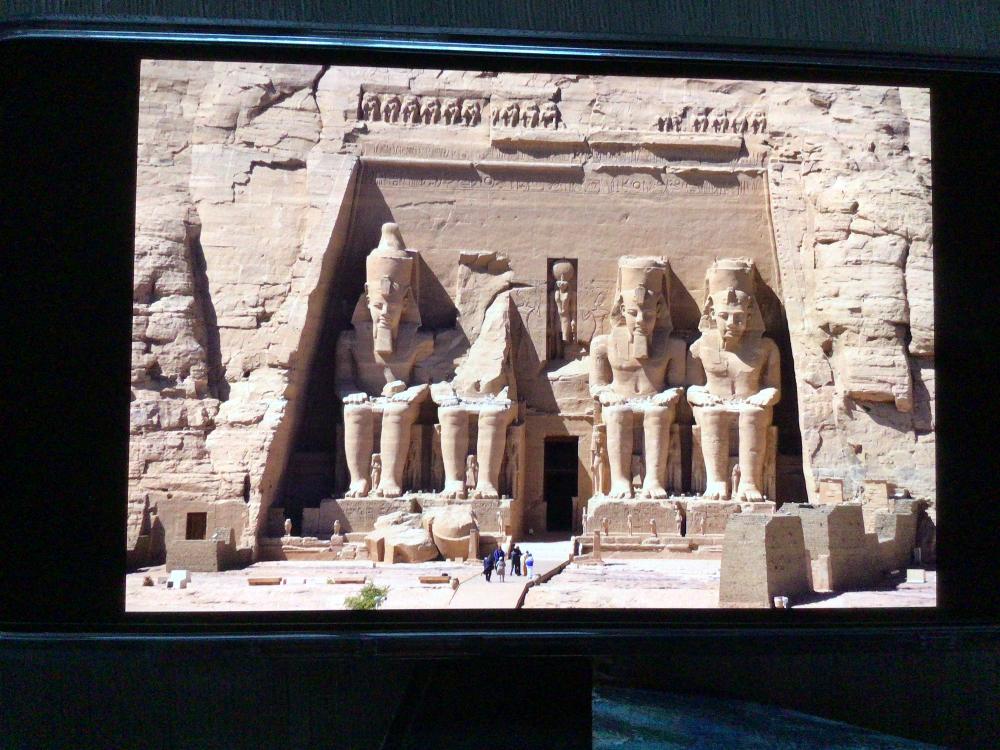
- Façade of the Temple of Ramses II, Abu Simbel, Egypt
- 1290-1224BCE
- limestone
- Ramses was Egypt's last warrior pharaoh. Four large statues to heroize them. Sculptures inside too
- Aerial view of the temple of Amen-Re, began power in 15th century BCE. Large sizes for devotion and as a power move/fuck you
- Amen Ra is the sun god
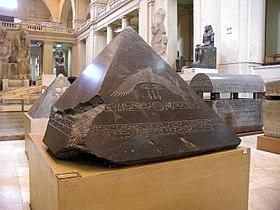
- Ben ben
- pyramid shape on top of an obelisk, symbol of sun rays
- four symbols of Egypt: Njeims headdress, water, ceremonial beard, ben ben, lotus and papyrus (for upper and lower egypt)
...
- Hypostyle Hall
- 1290-1224 BCE
- Temple of Amen Re, big room held up by columns
- Aerial plain, there is a central axis, bilaterally symmetrical
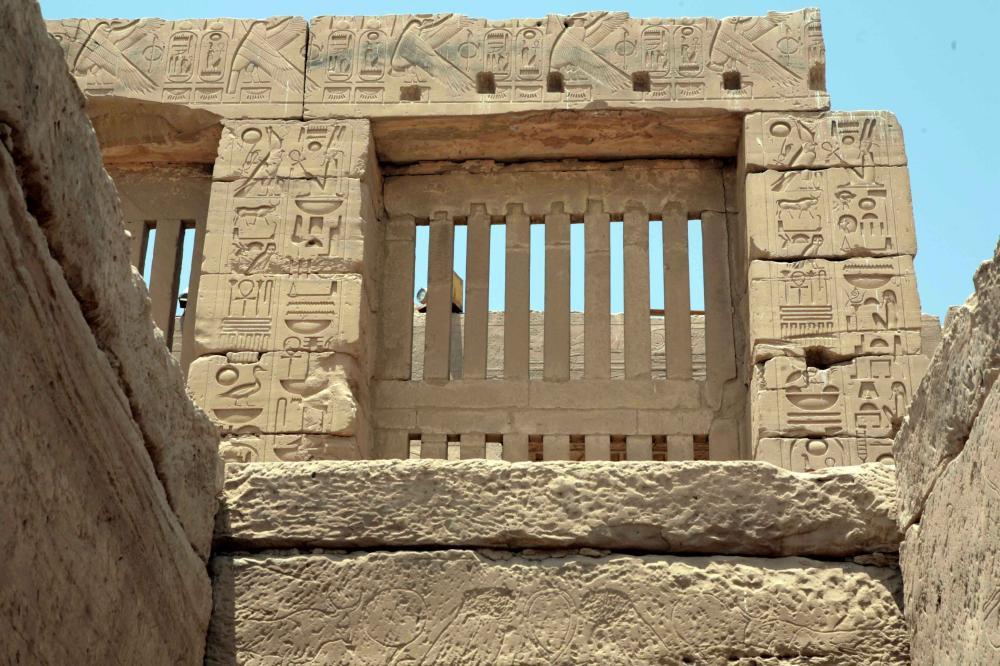
- Clerestory windows
- center elevated in a large hypostyle hall
- light creates spirituality/enlightenment, and also drama
Name differences between ancient and new kingdom Egypt and their art
- New Kingdom columns are more advanced and intricate, old are more plain. Both have lotus and papyrus
- Old kingdom has more unrealistic proportions, very rigid.
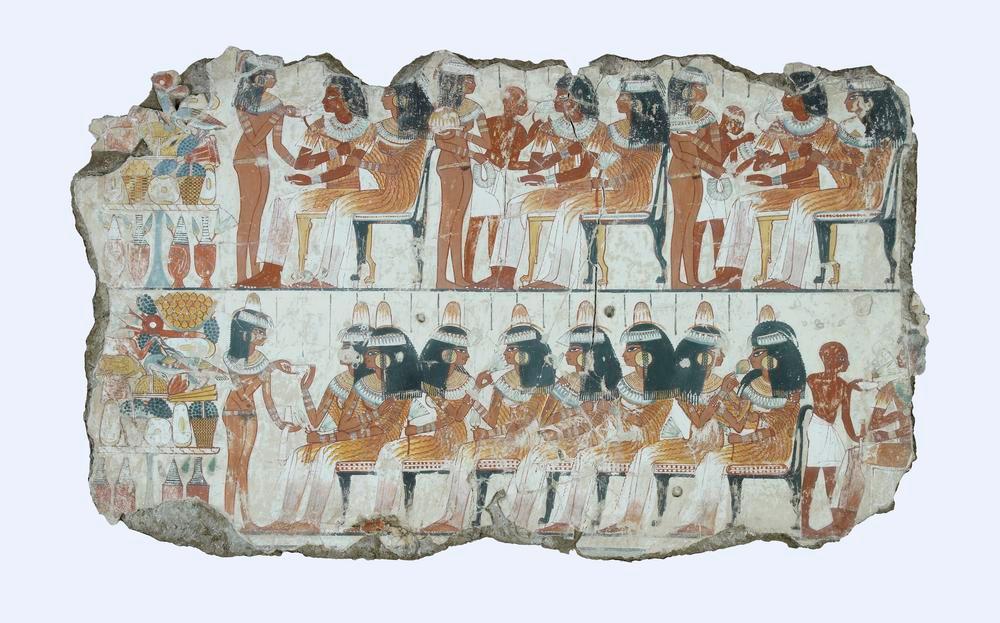
- Funerary banquet from the tomb of Nebamun
- 1400-1350BCE
- twisted view. seated=power, lower status=more naturalistic, central woman=rebirth, fertility, regeneration
- One day a year, a banquet is held to honour the dead
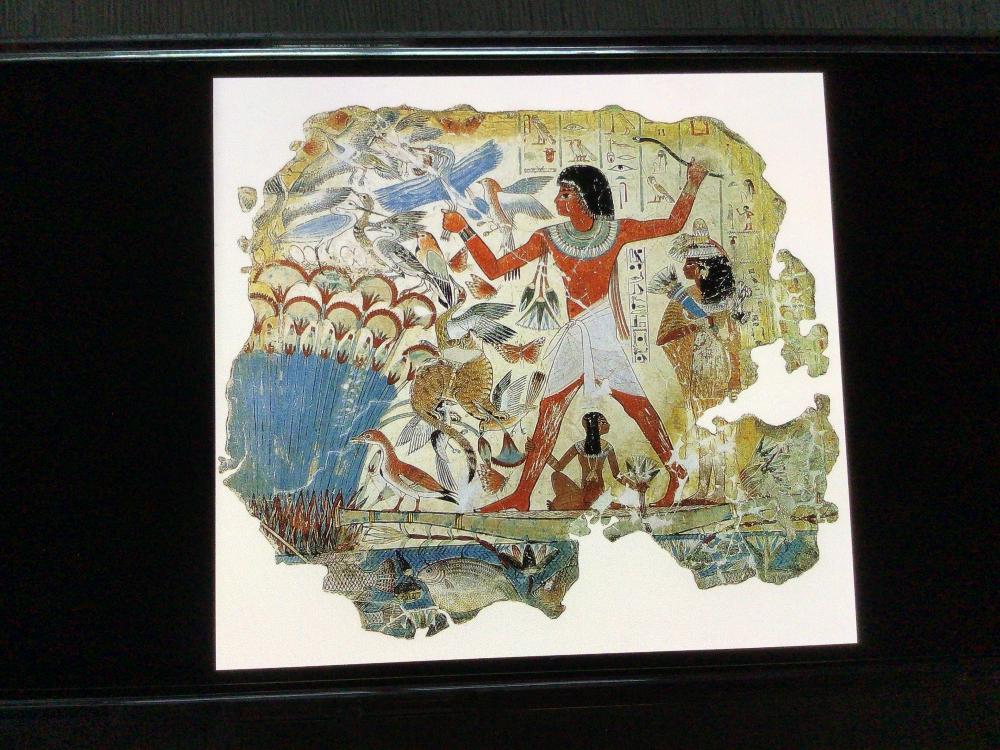
- Nebarmun hunting fowl
- 1400-1350BCE
- fresco secco (paint and plaster mix)
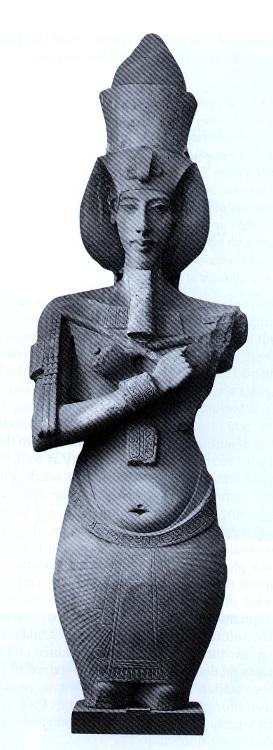
- Akhenaton
- 1353-1335BCE
- sandstone
- holding crook and flail, arm broken off. Otan around head to show halo, depiction of life
- no animal form, just human and the disk of light, no longer idealized, proportions are more accurate
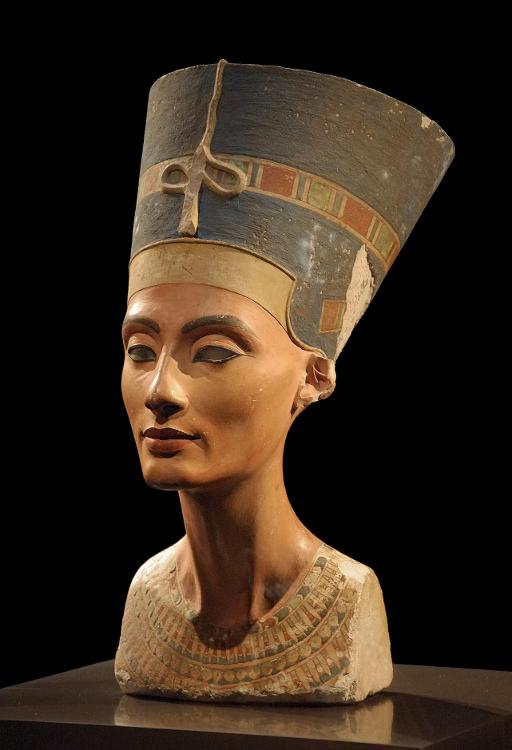
- Thutmose, Nefertiti
- 1353-1335BCE
- painted limestone, 1'8" high. unfinished, naturalistic, lotus flower
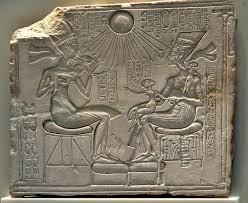
- Akhenaton and Nefertiti, 3 daughters from Amarna. Ankh symbol of everlasting life
- 1353-1335BCE
- affection being shown to children was new in art
- limestone, relief sculpture 1'1/4"